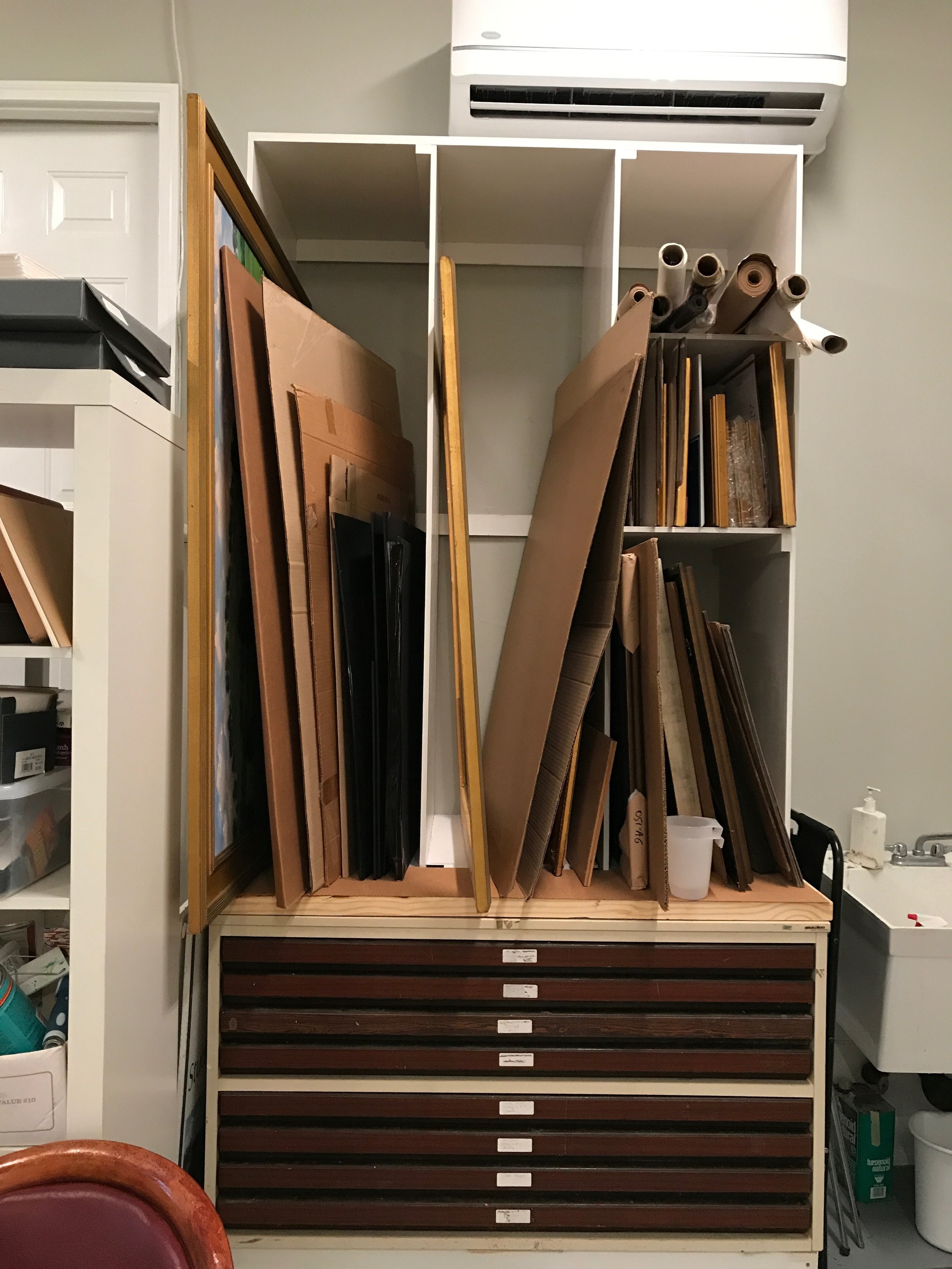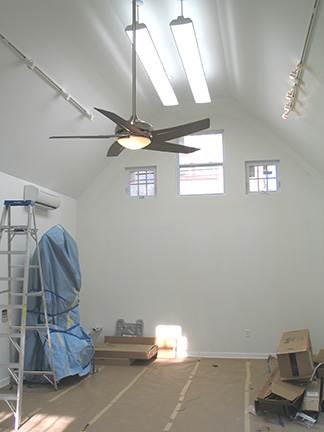A Room of One's Own
/Yesterday on social media I posted the video of my long-awaited studio completion. If you weren't tuned in to that, I'm including it below. Today I'm also sharing a few more photos and some details because I'm really excited to finally have a permanent home to create my work.
Yes, the garage-to-studio is complete! Hurrah! 😄 I feel as if I have been moving for nearly two years, because, well, I have. So just the very thought of not having to shuffle my supplies and equipment from one place to the other is a most delicious concept to me.
It doesn't have the cottage charm of my former studio, but it's open and airy and has North light and storage, so I feel like I'm in luxury any way. Here are the bins we had built:
We built them "up" to keep the work off of the floor, even making use of the space over the water heater.
I'm using the same hanging system for hanging art as I did in the last studio, using picture rail and a hook and rod system from Walker Display. But my favorite feature is the shelving that runs along the perimeter of the space.
This came about because I had a strange cinder block bump-out that ran along the walls of the garage, and the carpenter suggested capping this off with some shelving where I could perch works-in-progress, wet paintings, or other unframed art. He also ran this same shelving over the doors and windows I had framed in, in place of the the old garage doors.
This space is just slightly east of due north studio lighting. But as you can see, when the sun goes down I still need supplemental lighting. For that I have installed Daylight LED tube lights and tracks. At some point I may install a couple of additional short tracks over my framing and auxiliary painting area, but I have enough to get me up and running.
In keeping with tradition, I maintain my usual impeccable timing, and have completed the studio just in time to leave for two weeks on a plein air painting trip to Maine for an artist's residency. So, as excited as I am for my new space, it will have to wait to get junked up until I return! 😉 Meanwhile, God and internet willing, I hope to blog from the road during my travels.





























